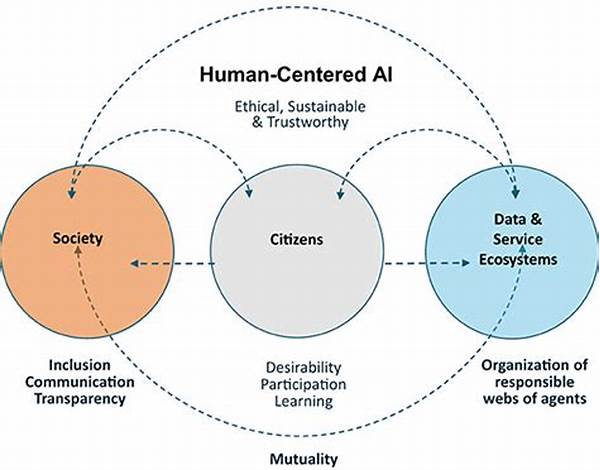Hey there! Let’s chat about something super exciting: the way we design AI and how democracy plays a role in it. Yeah, I know—AI might sound all techy and complicated, but stick with me! We’ll break it down and explore how democratic approaches to AI design can make things more inclusive and fair for everyone. This isn’t just for tech geeks; it’s for anyone who cares about how technology shapes our world. So, pour yourself a coffee, get comfy, and dive into this fascinating topic with me!
The Basics of Democratic Approaches to AI Design
So, what are democratic approaches to AI design, and why should we care? Well, it’s all about involving diverse voices in the process of designing artificial intelligence. Instead of letting a few big tech companies call all the shots, democratic approaches advocate for an open, community-driven process. This means people from different backgrounds—whether they’re engineers, artists, or everyday users—get a say in how AI is developed. Imagine creating an AI that truly reflects the needs of a varied society. We’re talking about systems designed with broader input, promoting transparency and accountability. It’s not just a utopian dream; it’s happening now. The goal is to ensure that AI systems respect our values and rights, serving the public good rather than just corporate interests. By championing democratic approaches to AI design, we aim for technologies that are fair, unbiased, and beneficial to all user groups.
Benefits of a Democratic AI Design
1. Inclusion: Democratic approaches to AI design ensure diverse voices are heard, meaning AI reflects various cultural and social perspectives.
2. Transparency: When everyone gets a peek behind the curtain, trust in AI systems grows because the processes aren’t shrouded in mystery.
3. Ethical Design: Diverse input leads to ethical considerations being front and center, helping AI systems avoid biased outputs.
4. Innovation: Mixing ideas from different fields can spark creativity, leading to groundbreaking AI solutions that one single perspective might miss.
5. Accountability: More cooks in the kitchen mean more eyes watching. This ensures the AI development process remains accountable and responsible.
Challenges to Democratic Approaches
But, hold your horses! Democratic approaches to AI design aren’t without their hurdles. Let’s be real for a moment: getting everyone to agree can feel like herding cats. The sheer diversity of opinions can sometimes lead to slower decision-making processes. Moreover, balancing technical expertise with non-expert input is a tightrope walk. We want inclusivity, but it’s crucial that the voices contributing have a good grasp of how AI functions. There’s also the logistical challenge of organizing such a broad-based input system—think of the coordination, meetings, and feedback loops involved. Lastly, we need to ensure that all this inclusivity doesn’t just become a box-ticking exercise for companies doing it for PR. Despite these challenges, the promise of democratic approaches to AI design lies in its potential to create tech that better serves humanity.
Establishing a Democratic Design Framework
Creating a solid framework is essential for successful democratic approaches to AI design. First, we need inclusive platforms where people can contribute ideas easily—let’s make this process as user-friendly as possible! Next, there should be rigorous but accessible ways to review suggestions, ensuring they align with both public interest and technical feasibility. It’s all about blending open-feedback cycles with expert evaluations to create something innovative yet practical. Encouraging regular public check-ins and updates on the AI’s progress helps maintain transparency and build public confidence. Moreover, providing educational resources ensures that all participants, regardless of their background, are well-informed and actively engaged. Lastly, these frameworks should be adaptable, evolving as technology and public needs change over time, ensuring they remain relevant and impactful.
Public Participation in AI Development
Public participation is the bread and butter of democratic approaches to AI design. Get this: when everyday folks, not just specialists, contribute to AI’s creation, the technology gets a real-world pulse check. Their input can lead to solutions that truly resonate with public values and ethical standards. Think of it as crowd-sourcing consciousness—a collective effort that shapes AI in a direction that feels right for more of us. But how do we do this? Well, workshops, online platforms, and community feedback sessions are some ways to gather valuable insights. We shouldn’t just be recipients of technology but active shapers of it. By engaging the public in this ongoing dialogue, AI becomes more about us and less about faceless algorithms.
Crafting Policies for AI Design
Policies play a major role in ensuring democratic approaches to AI design successfully take root and thrive. We need thoughtful, robust regulations that guide the development process in an ethical manner without stifling innovation. It’s about maintaining a balance between protecting public interests and allowing creative freedom in tech development. One way to achieve this is by establishing clear ethical guidelines and frameworks that prioritize transparency and equity. Additionally, governments and institutions should foster open collaborations with tech firms, academia, and civil society to create inclusive policy frameworks. These policies should encourage accountability, ensuring any AI systems are regularly audited and aligned with democratic values. Crafting these policies is work, but also an exciting opportunity to future-proof AI against the societal challenges it might pose.
Summary and Outlook
So there you have it—democratic approaches to AI design offer an exciting and necessary path toward creating a more inclusive, transparent, and effective AI landscape. As technology continues to evolve rapidly, embracing these approaches can help ensure AI systems reflect and respect diverse public needs and values. Businesses, governments, and communities must join hands to champion open design processes, from initial brainstorming sessions to final implementation. While challenges like coordination and educational access exist, they are not insurmountable. By fostering inclusive participation and crafting well-thought-out policies, we can pave the way for an AI future that’s both innovative and equitable. This journey will require everyone’s input, so don’t hold back—jump in and be part of shaping AI for tomorrow!

